Over the past few years, while filming our Battles of the Civil War series, we have visited most of the major battlefields of the American Civil War. In this post we present out top ten favorite battlefields. They are ranked according to a few criteria – the importance of the battle, how well the battlefield is preserved, how interesting it is to visit, and how easy it is to understand the battlefield based on its terrain.

10. Bull Run / Manassas
Manassas National Battlefield Park just outside of Washington, DC, preserves the site of two important Civil War battles. It has the site of both the catastrophic Union defeat in the first battle of the war as well as one of Stonewall Jackson’s grandest flank attacks of the war. While the landscape is not necessarily dramatic, you can trace the progress of the fighting across the rolling fields and woods, and see several iconic sights, like the Henry House from the first battle, or the Railroad Cut from the second.
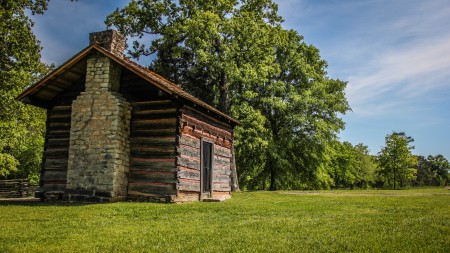
9. Chickamauga
Braxton Bragg’s defeat of William Rosecrans in 1863 was one of very few major Confederate victories in the west. The site’s woods and fields in northern Georgia, not far from Chattanooga, Tennessee, is well preserved by the National Park Service. The progress of the battle can be roughly determined by the area’s roads, the Brotherton Farm, and the dramatic slopes of Horseshoe Ridge.
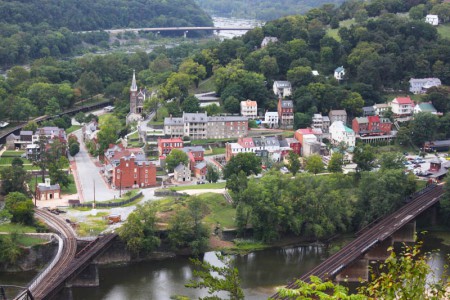
8. Harper’s Ferry
The small town of Harpers’ Ferry, West Virginia sits at one of the Civil War’s vital crossroads, the confluence of the Shenandoah and Potomac Rivers at the base of the Shenandoah Valley. Its importance began before the Civil War, when John Brown chose it to launch his attempt to start a slave rebellion. The town’s engine house, in which his raid came to a bloody end, is still extant. It changed hands fourteen times during the war, most memorably when Stonewall Jackson laid siege to it in 1862 during the Sharpsburg campaign. It is one of the most beautiful of Civil War sights – dozens of historic houses sitting in a picturesque setting right in the middle of the Appalacian Mountains. For the more adventerous, try a climb up Maryland Heights for a great view overlooking the town.
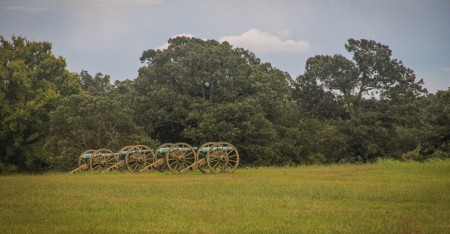
7. Shiloh
The Battle of Shiloh in 1862 was one of the first major battles in the Western Theater, when Ulysses S. Grant beat off a surprise attack from Albert Sydney Johnson and P. G. T. Beauregard. Although much of the battlefield is wooded, making it hard to trace the progress of the combat, there are several highlights. You can see Pittsburg Landing on the Tennesse River, where the Federal troops landed, Shiloh Church, around which the fighting raged, the Sunken Road, the subject of many Confederate assaults and the site near which Johnson was killed, and where Grant made his last stand.

6. Charleston Harbor
The harbor of Charleston, South Carolina saw several seminal events. The 1860 Confederate bombardment of Fort Sumter signaled the start of the war, and later in the war the United States troops fought several battles to capture the city. Three main forts survive to this day, Fort Sumter, Fort Moultrie, and Castle Pickney, which is closed for visitors. The town of Charleston itself is one of the prettiest historic towns in the south, and home to the H.L. Hunley, the Confederate vessel that was the first submarine in history to sink an enemy ship.
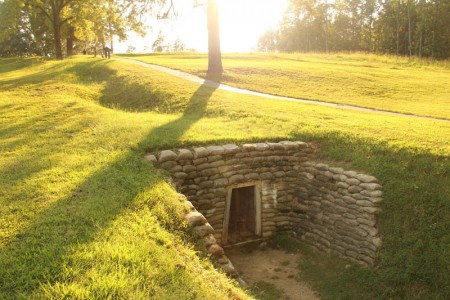
5. Petersburg
It was during the Siege of Petersburg, from 1864 to 1865, that the rebel army under Robert E. Lee began to crumble before Ulysses S. Grant. The positions of the troops are easy to see, since they built elaborate earthworks, many of which are preserved. The battlefield is inside two parks – Petersburg National Battlefield, which has a large crater and several important forts, and Pamplin Park, the site of the Union breakthrough. Make sure to visit the reconstructed earthworks at both parks, and the excellent National Musem of the Civil War Soldier at Pamplin Park.
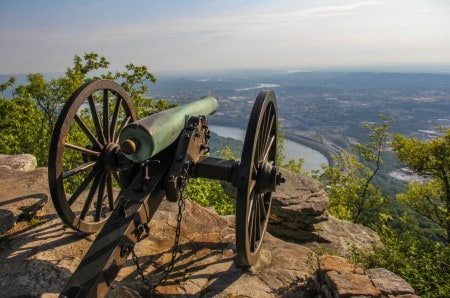
4. Chattanooga
Although only portions of the Chattanooga battlefield are preserved, and some of the monuments are literally in the front yards of houses, it is, without a doubt, the most dramatic of Civil War battlefields. The important topographic features of Lookout Mountain, Missionary Ridge, and a bend in the Tennessee River encircle the city of Chattanooga and make it easy to see the armies’ positions during the siege. Chattanooga was an important city during the war, and when Braxton Bragg laid siege to the troops inside after his victory at Chickamauga, Grant and Sherman went to the city and led the successful breakout attacks.
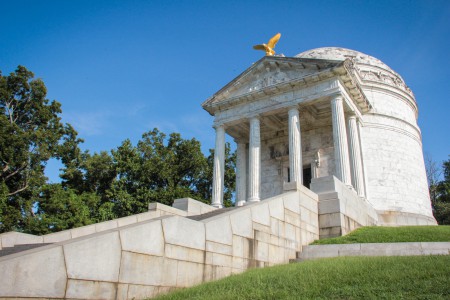
3. Vicksburg
The fortifications around Vicksburg were impressive in the Civil War era – Jefferson Davis called it the Gibralter of the West – and they remain so today. Situated on a bluff high above the Mississippi River, visitors can see plenty of remains from Grant’s 1863 siege of the town. Some portions of the battlefield, however, are not quite so well preserved. Also interesting are the many monuments which speckle the landscape, the Old Warren County Court House Museum, which has a large collection of Confederate relics, and the USS Cairo, one of only four surviving Civil War ironclads.
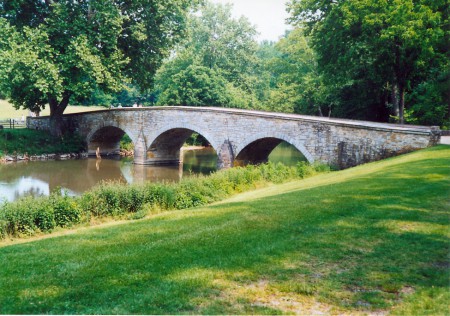
2. Antietam
Lee’s first invasion of the north was stopped by George McClellan at the Battle of Antietam, or Sharpsburg as it is also called. It is a beautifully preserved battlefield, and visitors can trace the progress of the fighting, from the Bloody Cornfield and Dunker Church on the Confederate left, Bloody Lane in the center, and Burnside’s Bridge on the right. Also on the battlefield is the Pry House Field Hospital Museum, where you can learn about Civil War medicine in what was McClellan’s headquarters during the battle.
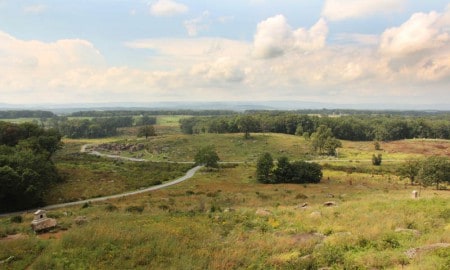
1. Gettysburg
Gettysburg may be the classic Civil War battlefield, and it is easy to see why. It was the spot where George Meade was able to defeat Robert E. Lee’s invasion of the north. The location is well preserved, and has many iconic locations, including the rocks of Devil’s Den, Little Round Top, where you can get a great view of much of the battlefield, the famous angle in the stone wall on Cemetery Ridge or the lesser-known Culp’s Hill, where fighting raged for much of the battle. Much of the landscape has been preserved as it was in the 19th century, and the fields are dotted with cannon and monuments. The stories of the battle really come alive at Gettysburg.
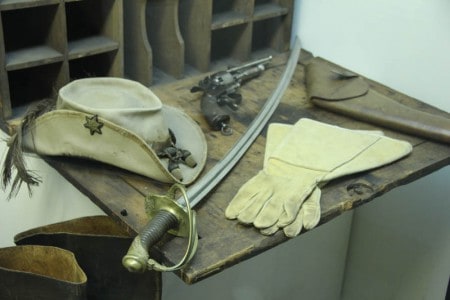
Bonus: The Museum of the Confederacy
While not strictly a battlefield, the Museum of the Confederacy in Richmond, Virginia, is a must-see. It has an amazing collection of artificats, and Civil War buffs will recognize nearly every artifact as assosiated with some of the most iconic of Civil War stories – like General Armistead’s hat from Pickett’s Charge, or Stonewall Jackson’s coat. It is right next door to the Confederate White House, from which Jefferson Davis ran the Confederate government throughout the war.
Is your favorite site missing? Disagree with our choices? Leave us a comment and let us know!


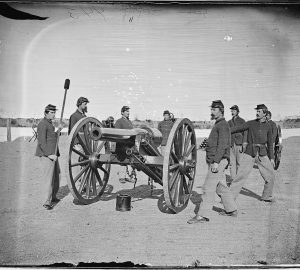
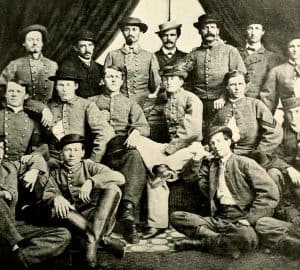
Very informative. When is the best time of year to visit?
The climate is different at different battlefields, so different places may be different. But I would recommend spring or fall. You then have more mild temperatures, and avoid the larger crowds of summer.
Thanks for reading.
You indeed captured the top 10 Battlefields. I agree that the best time to travel is spring and fall. One of best battlefield tours is to follow the Appomattox Campaign starting at Five Forks, Petersburg Battlefield & Pamplin Park, Sailors Creek, Walk the High Bridge Battle in Farmville, then finish at Appomattox Court House.
Thank you for the list
For me nothing brings a more bone chilling experience than the bloody angle at spotsylvania battlefield
That is indeed quite the spot. It is amazing to think how much went on in that small plot of ground. Thanks for reading.
The Confederacy lists 200 battles/skirmishes in the state of Kentucky. To see them all would take years if their modern locations were known. Locals don’t know that fighting occurred in their town, so that makes for a solid disappointment. The LAST Civil War battle in Kentucky was on land that today is directly across the street from the federal prison in Eddyville.
I visited all of these sites in the fall of 2011. I particularly liked Harper’s Ferry. If it weren’t for it’s historical significance- unlike many of the other civil war battlefield sites- it would still be worth a visit.
Here are a few reasons (IMO):
1. The scenery. Located at the confluence of the Shenandoah and Potomac River, deep in Appalachia’s Shenandoah Valley, it doesn’t get much better than this.
2. Antiques. From antique stores to the stores themselves, down to the cobbles that comprise its steep streets, Harpers Ferry doesn’t merely epitomize Americana, it IS Americana.
3. When I was there in October there was hardly a tourist in sight. Aside from the occasional backpacker passing through via the Appalachia Trail, I recolregardeding only a few elderly folks at the ice cream shop, a young couple eating olives or something along the river, and a shopkeepers dog who greeted me at the door. I was alone for one tour. The couple joined me on another. I grabbed a coffee when I first arrived and had pizza for lunch. No lines.
4. Outdoor Recreation: Walking. Biking. Hiking. Climbing. Paddling. Trail Running. Etc. It’s World Class.
5. Ghost Hunting: Harper’s Ferry was known for it’s many haunts long before ghost hunting became “a thing”. Beneath its quaint and lovely facade you’ll find in Harper’s Ferry a history of death and despair unique to an already brutal world. In addition to it being the site of countless deaths by combat, HF and the surrounding area has been host to genocidal natural disasters and disease outbreaks, namely cholera. No wonder it’s considered one of the most actively haunted locations in the world. Yay!?
Like Thomas Jefferson said, “The passage of the Patowmac through the Blue Ridge is perhaps one of the most stupendous scenes in Nature …. This scene is worth a voyage across the Atlantic.”
You might want to include in the Richmond, Va Museum you should go to the Tredegar Museum. They made most of the cannons and cannon balls used by the Confederate Army through out the Civil War.
This is a fantastic list of Civil War battlefields, offering great insight into both history and preservation. However, more attention could be given to the impact of modern development on the authenticity of these sites and accessibility for all visitors.